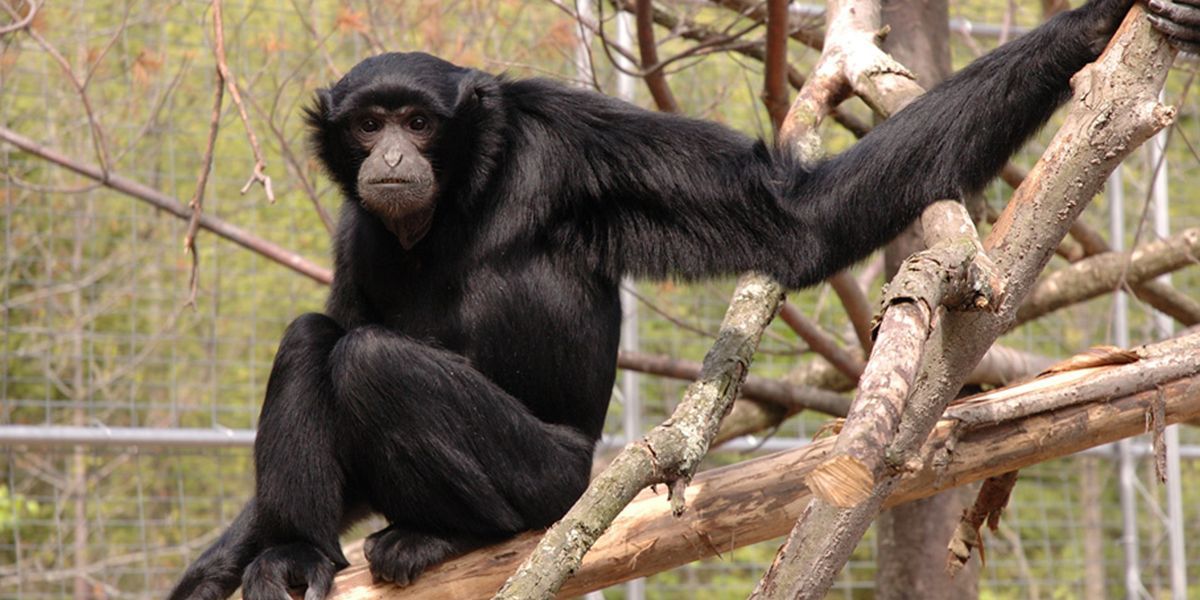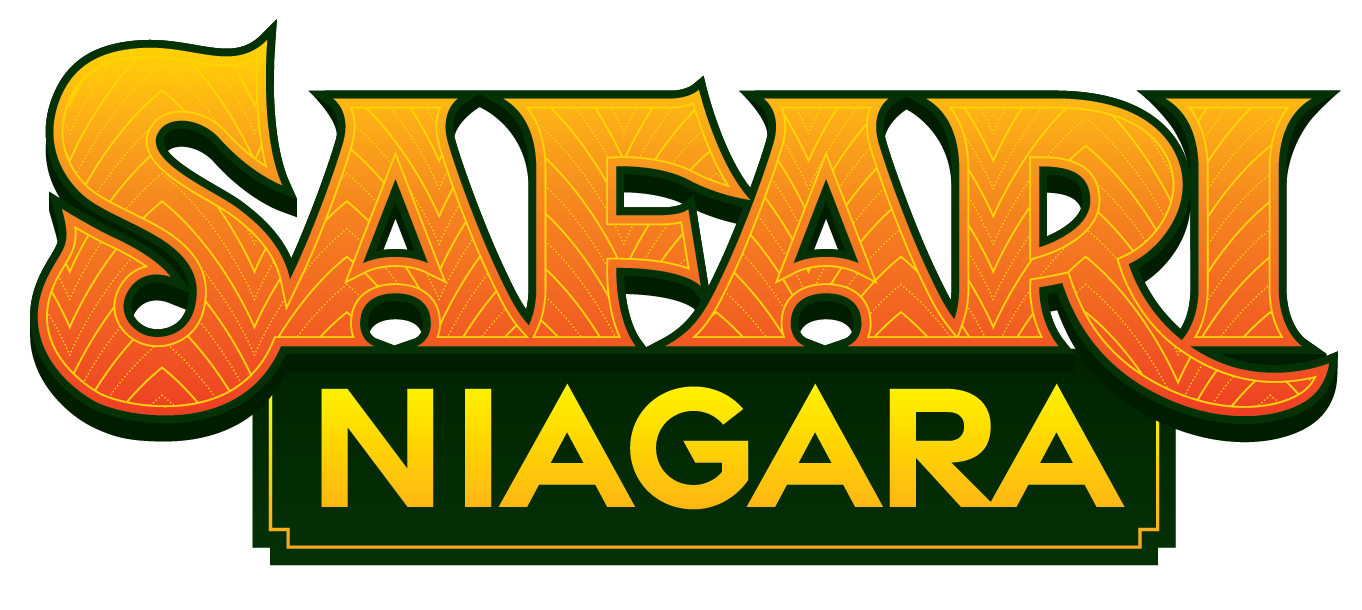GET THE SAFARI SCOOP!
Thank you for contacting us.
We will get back to you as soon as possible.
We will get back to you as soon as possible.
Oops, there was an error sending your message.
Please try again later.
Please try again later.
Siamang Gibbon
Native to Malaysia, Thailand and Sumatra, these are the largest of the gibbons. They stand up to 1 metre (3 ft) tall and weigh up to 14 kg (30 lb). They are arboreal, living in forests up to elevations of 3800 metres above sea level.
Siamang Gibbons live in family groups consisting of one dominant male, a dominant female, their offspring and infants. Subadults leave the family group at an age of six to eight years. They are very social animals. The male will often carry an infant for a large portion of the day after it reaches an age of about one month.
They eat primarily fruit but also leaves, flowers and a few small animals and insects. Each group controls a home territory which does not overlap that of other groups.
The gestation period is 7-8 months and one infant is born typically every 3 years. In very rare cases, female gibbons give birth to twins. Young offspring cling to their mother’s bellies for the first three to four months and fathers begin to carry them at about nine months and take on most of the parenting roles until the offspring is 3 years old. . Afterwards, the siblings take over babysitting, ensuring that the new sibling learns how to care for their own child when they reproduce.
Vocalization is a large part of socialization amongst Siamangs. Both males and females call together and they produce two different kinds of notes using their throat sac: A deep boom and a loud wow. These calls can be heard as far as two kilometres away.
Siamangs are very acrobatic and make homes in trees. They move by brachiation using their arms to swing from one branch to another. They can also be seen walking with outstretched arms for balance and to avoid dragging the ground. Their diet consists mostly of fruit but they can also eat small birds, eggs, spiders and insects. In captivity we feed specially formulated biscuits, hard boiled eggs, cooked pasta, tuna fish and fresh fruits and vegetables.
Siamang Gibbons live in family groups consisting of one dominant male, a dominant female, their offspring and infants. Subadults leave the family group at an age of six to eight years. They are very social animals. The male will often carry an infant for a large portion of the day after it reaches an age of about one month.
They eat primarily fruit but also leaves, flowers and a few small animals and insects. Each group controls a home territory which does not overlap that of other groups.
The gestation period is 7-8 months and one infant is born typically every 3 years. In very rare cases, female gibbons give birth to twins. Young offspring cling to their mother’s bellies for the first three to four months and fathers begin to carry them at about nine months and take on most of the parenting roles until the offspring is 3 years old. . Afterwards, the siblings take over babysitting, ensuring that the new sibling learns how to care for their own child when they reproduce.
Vocalization is a large part of socialization amongst Siamangs. Both males and females call together and they produce two different kinds of notes using their throat sac: A deep boom and a loud wow. These calls can be heard as far as two kilometres away.
Siamangs are very acrobatic and make homes in trees. They move by brachiation using their arms to swing from one branch to another. They can also be seen walking with outstretched arms for balance and to avoid dragging the ground. Their diet consists mostly of fruit but they can also eat small birds, eggs, spiders and insects. In captivity we feed specially formulated biscuits, hard boiled eggs, cooked pasta, tuna fish and fresh fruits and vegetables.
Fun Facts
When they vocalize each day they can be heard throughout the park. The call of the Siamang Gibbon is the loudest creature in the primate family. They can be heard at a distance of 3.2 km (2 mi.)

scientific classification
Kingdom
Animalia
Phylum
Chordata
Class
Mammalia
Order
Primates
Family
Hylobaaatidae
Genus
Symphalangus
Species
S. syndactylus
did you know?
Siamangs differ from other Gibbon species by the throat sac or gular sac that expands while inflated prior to making calls. These Gibbons live about 20-30 years in the wild and may live up to 40+ years in captivity.
They have a large throat sac which inflates to amplify the sound.
They are sympiatic (co-existent) with many other species of primates.
Where to find us
Safari Niagara's 13 Siamang Gibbons reside at the park as four different family groups. Several were born at Safari Niagara.
Park Hours
- Mon - Sun
- Closed
Office Hours
- Mon - Fri
- -
- Sat - Sun
- Closed


© 2024
Copyright Safari Niagara. All Rights Reserved.

